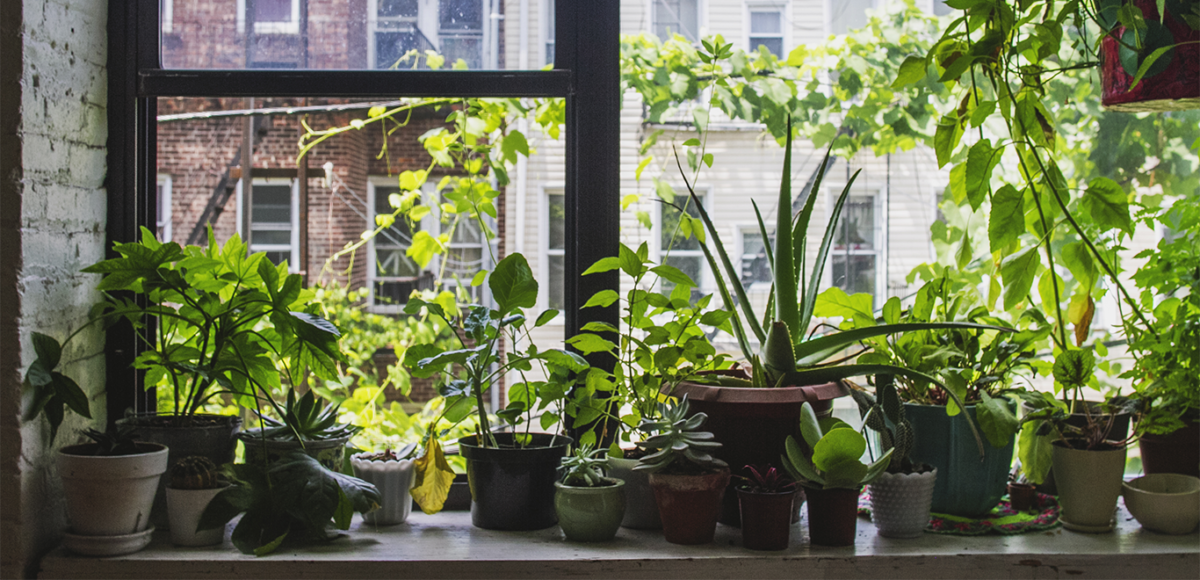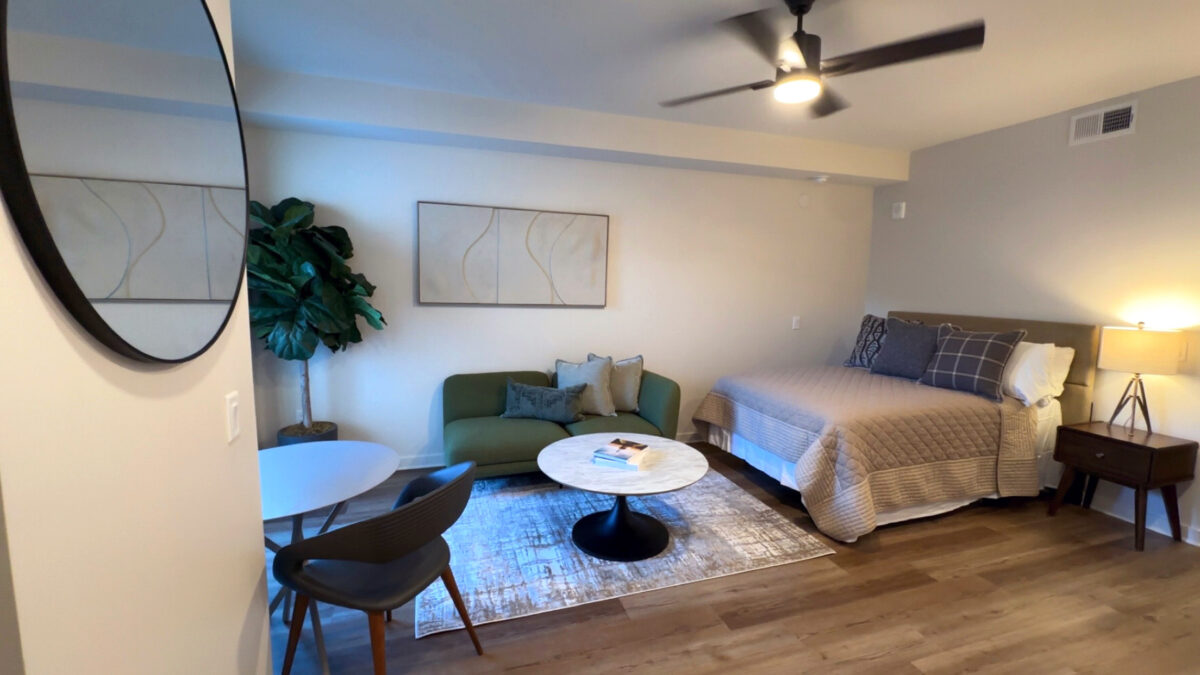Don’t let apartment living stifle your green thumb. Believe it or not, you don’t need a backyard to create a garden. In fact, according to the 2019 World Happiness Report, countries like Denmark, Sweden, and Norway were named among the top ten happiest countries in the world. Part of this is contributed to a way of life or concept called “hygge,” pronounced “HOO-gah”. Hygge means creating a warm atmosphere and enjoying the good things in life with good people. In Nordic Scandinavian design, this concept flows into the home through the warmth, simplicity, and pulling inspiration from nature.
This trend is the perfect canvas to blend in other natural materials that are found in Nordic homes like wood, textured textiles, glass, and, of course, plants!
If you’re hoping to bring a bit of the outside indoors, follow these steps to create an indoor herb garden that’s as beautiful as it is delicious right inside your home.
1. Find a sunny spot next to a window to set things up.
Like most other plants, your herbs need ample sunshine to grow – ideally at least six hours per day. Many apartment gardeners will first think to put their herbs in an empty windowsill, but there’s so much more that can be done with your mini-garden to have a cohesive design that also compliments the rest of your home.
One way to do this is by putting your plants on tables or carts near windows to create layered levels of greenery. Also, take a moment and consider putting your herbs into baskets or macramé plant holders as a way to bring more texture into your space – they’re also very on trend at the moment!
If this is your first time figuring out how to start an indoor garden, make sure to scope out the location in your apartment before buying seeds or plants. The spot you choose for your garden may affect which herbs will thrive. For example, a south-facing window will get a lot of warm, direct sunlight, while east and west-facing windows will get more indirect light and stay a bit cooler. While many traditional herbs do best in direct sunlight, certain kinds will do just fine in partial shade with good air circulation.
2. Choose the herbs you’d like to grow in your indoor garden.
Once you’ve determined a spot for your garden, it’s time to choose which plants or herbs you’re going to grow indoors. As previously mentioned, it’s essential to keep the location of your indoor garden in mind during this step.
Herbs like rosemary, sage, and basil will do best in direct sunlight, while herbs like mint, oregano, or parsley can handle a less sunny spot. Researching the needs and characteristics of different herbs is vital! If you don’t have any south-facing windows, you may want to invest in grow lights.
Of course, it’s important to consider which herbs you’d like to cook with, too! Once you’ve determined which herbs will do best in your garden, you can narrow down the list by which ones you’d actually use in your meals.
3. Plant your herbs.
The only thing herbs need almost as much as they need sunlight is proper drainage, so make sure you’ve selected pots with drainage holes. Opt for plastic, metal, or ceramic pots, as clay pots can be drying. Make sure you place your potted herbs on a saucer or drainage pan so as not to ruin your windowsill or tabletop!
Fill your pots with a high-quality potting mix. If you’re unsure which combination to use, ask the experts at the gardening store where you purchase your herbs. Your herbs need soil that retains the proper amount of moisture, provides appropriate nutrients and allows for adequate airflow around the roots. Give your precious herbs the home (and food) they need to flourish!
4. Water your herbs as needed, but don’t overdo it!
Watering needs vary from herb to herb, so it’s important to do a little background research on your specific selection. The general rule of thumb is that the soil shouldn’t be completely dried out, but it shouldn’t be soggy either. There’s a sweet spot right in the middle! Check your herbs daily, and water them slowly whenever the top layer of soil feels dry. If you find yourself needing to water your herbs every single day, the pot may be too small, or their spot on the windowsill may be too hot.
5. Protect your herbs from pests with a DIY soap spray.
Even indoor garden plants face the threat of pests, like spider mites and aphids, and they can wreak havoc. It’s important to stay vigilant and protect your precious herbs! Before you bring any plants into your home, check them thoroughly for any bugs. Even if you don’t spot any, spray them down with cool water using your kitchen sink sprayer to remove any you may have missed (or their eggs!)
To keep these pests away from your herbs for good, spray them down with a simple pest-repelling mixture. In a spray bottle, add one tablespoon of natural dish soap to one quart of water. Shake it up, and spray it on your herbs every couple of weeks.
6. Keep an eye out for signs that your herbs are unhealthy.
Fortunately, it’s not very common for indoor herbs to experience diseases, but it can happen. If you notice that your herb suddenly looks discolored, has powdery splotches on the leaves, or has started wilting, they may be diseased. A nutritional deficiency in your soil, not enough sunlight, overcrowding, and overwatering can also cause your herbs to look not so hot. If your once healthy herbs begin looking unhealthy, double-check that the environment is appropriate and consider taking it to a plant nursery for a “check-up”!
7. Use a pair of scissors to harvest your herbs when it’s time.
Once your herb has grown approximately four to six inches tall, it’s time to enjoy the fruits of your labor! Use a clean pair of scissors to trim your plant, beginning with the older, outer leaves on the bottom. Make sure you don’t take more than one-third of the plant at a time but don’t hesitate to harvest often! Small, frequent trims can actually help your herbs grow quickly.
While an indoor garden can add a touch of hominess, making sure the rest of your apartment is comfortably furnished makes all the difference. With CORT Furniture Rental, you can turn any temporary apartment into a comfortable home!






